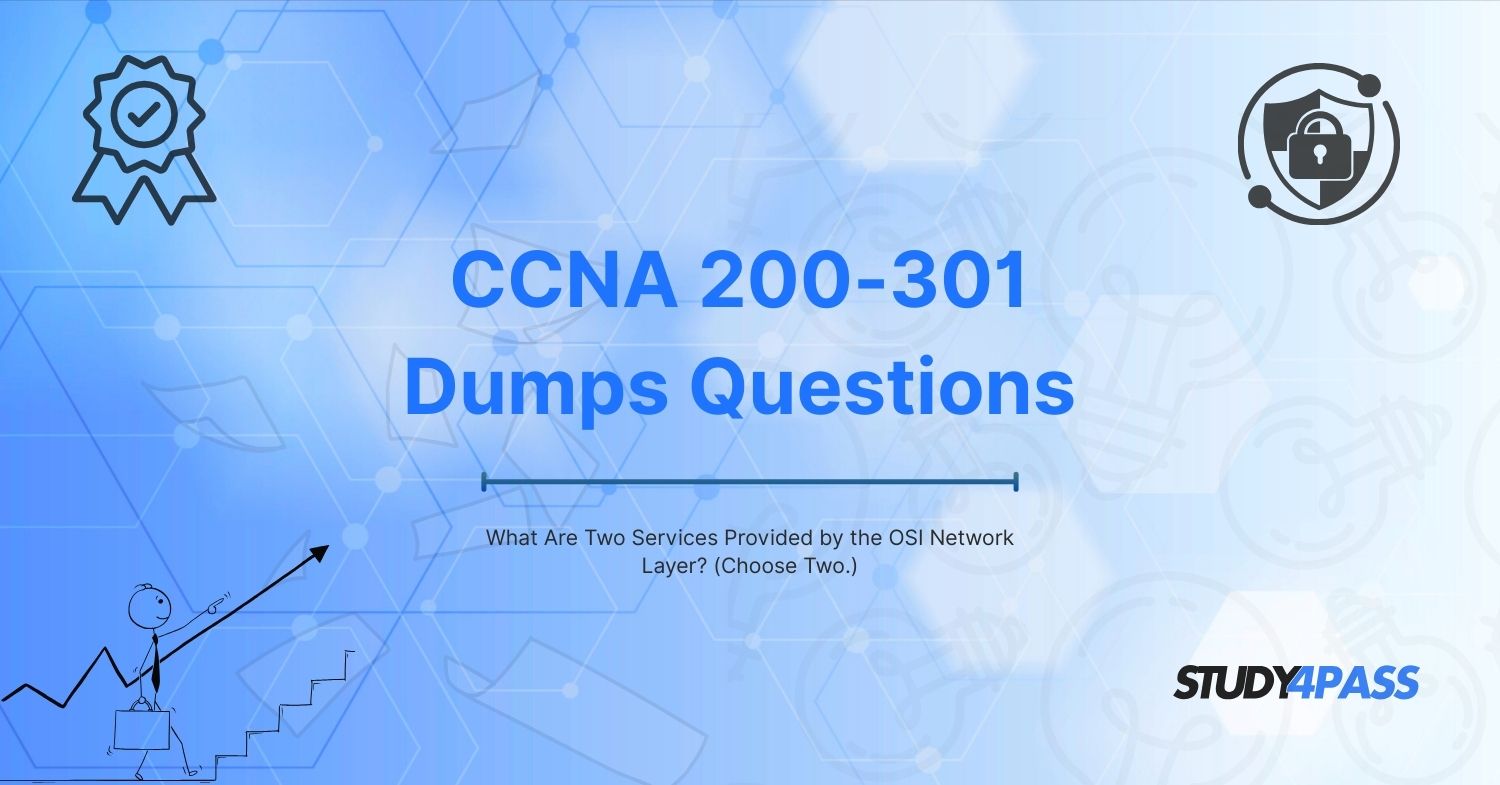Introduction To CCNA 200-301 Exam Prep Practice Tests Full Questions
Preparing for the CCNA 200-301 exam requires a deep understanding of networking concepts, especially the OSI (Open Systems Interconnection) model. One of the most critical layers in this model is the Network Layer (Layer 3), which plays a vital role in data communication.
If you're looking for CCNA 200-301 exam prep practice test full questions, you’ve come to the right place! At Study4Pass, we provide high-quality exam prep practice test and study materials to help you pass your certification with confidence.
In this blog, we’ll explore two key services provided by the OSI Network Layer and why they are essential for the CCNA exam.
Understanding the OSI Model and the Network Layer
Before diving into the services, let’s briefly recap the OSI model:
The OSI model is a seven-layer framework that standardizes network communication. Each layer has a specific function, ensuring seamless data transfer between devices.
The Seven Layers of the OSI Model:
1. Physical Layer (Layer 1) – Deals with raw bit transmission over a physical medium.
2. Data Link Layer (Layer 2) – Provides node-to-node communication and error detection.
3. Network Layer (Layer 3) – Focuses on logical addressing and routing.
4. Transport Layer (Layer 4) – Ensures end-to-end communication and reliability.
5. Session Layer (Layer 5) – Manages sessions between applications.
6. Presentation Layer (Layer 6) – Handles data encryption and formatting.
7. Application Layer (Layer 7) – Interfaces directly with end-user applications.
The Network Layer (Layer 3) is crucial because it enables routing packets across different networks.
Two Key Services Provided by the OSI Network Layer
Now, let’s answer the main question:
1. Logical Addressing (IP Addressing)
One of the primary services of the Network Layer is providing logical addressing, typically in the form of IP (Internet Protocol) addresses.
Why is Logical Addressing Important?
Unlike MAC addresses (which are physical and tied to hardware), IP addresses are logical and can be assigned dynamically.
They help in identifying devices across different networks.
IPv4 (e.g., 192.168.1.1) and IPv6 (e.g., 2001:0db8:85a3::8a2e:0370:7334) are the two main versions used today.
How Does It Work?
When a device sends data, the Network CCNA 200-301 Certification Layer adds the source and destination IP addresses to the packet.
Routers use these addresses to determine the best path for forwarding packets.
Example Scenario:
If Computer A (IP: 192.168.1.10) wants to send data to Computer B (IP: 10.0.0.5), the Network Layer ensures the packet is routed correctly, even if they are on different networks.
2. Packet Routing (Path Determination and Forwarding)
The second major service of the Network Layer is packet routing, which involves:
Path Determination – Deciding the best route for data to travel from source to destination.
Packet Forwarding – Moving packets between different networks using routers.
How Routing Works:
- Routers maintain routing tables that list available paths.
- They use routing protocols (e.g., OSPF, EIGRP, BGP) to exchange route information.
- The Network Layer ensures packets take the most efficient path.
Example Scenario:
When you visit a website, your request passes through multiple routers. The Network Layer ensures each router forwards the packet closer to the destination.
Why Are These Services Important for the CCNA 200-301 Exam?
Understanding the Network Layer’s services is crucial for the CCNA 200-301 exam because:
1. IP Addressing is Fundamental – You must know how IPv4 and IPv6 addressing works, including subnetting.
2. Routing Concepts Are Tested – Questions on static vs. dynamic routing, routing protocols, and router configurations are common.
3. Troubleshooting Skills – Network issues often relate to incorrect IP addressing or routing failures.
If you're using CCNA 200-301 exam prep practice test full questions, ensure you grasp these concepts rather than just memorizing answers.
Conclusion
At Study4Pass, we provide high-quality exam prep practice test, practice tests, and study guides to help you master these topics and pass your CCNA exam with confidence. Keep practicing, dive deeper into routing protocols, and strengthen your knowledge of IP addressing to become a certified networking professional!
Special Discount: Offer Valid For Limited Time “Cisco 200-301 Exam Prep Practice Test”
Sample Questions for Cisco 200-301 Exam Prep Practice Tests
Actual exam question from Cisco's 200-301 Exam
Which protocol resolves an IPv4 address to a MAC address on the same local network?
A) DNS
B) DHCP
C) ARP
D) NAT


